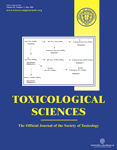-
PDF
- Split View
-
Views
-
Cite
Cite
Giuseppe Latini, Marika Massaro, Claudio De Felice, Prenatal Exposure to Phthalates and Intrauterine Inflammation: A Unifying Hypothesis, Toxicological Sciences, Volume 85, Issue 1, May 2005, Page 743, https://doi.org/10.1093/toxsci/kfi131
Close - Share Icon Share
We read with great interest the recent paper by Xu et al. (2005), showing that phthalates alter rat placental essential fatty acids (EFA) homeostasis via peroxisome proliferator-activated receptor (PPAR) overexpression, potentially leading to abnormal fetal development. Acumulating evidence from human and animal studies indicates that EFA of both the n-3 and n-6 series, as well as their eicosanoid metabolites, play important and modifiable roles in gestational duration and parturition (Allen and Harris, 2001). We have recently documented that di-2-ethyhexyl phthalate (DEHP) exposure begins during intrauterine life and is associated with a shorter duration of pregnancy (Latini et al., 2003). Because phthalates induce and activate PPARα and γ (Hurst and Waxman, 2003), and because they possess an intrinsic pro-inflammatory activity (Gourlay et al., 2003), we suggest their possible role in inducing and/or potentiating an intrauterine inflammatory response.
Cyclooxygenase (COX)-2 is an inducible enzyme known to be upregulated by growth factors, lypopolysaccharide (LPS), and cytokines during inflammatory processes (Perkins and Kniss, 1997). Exposure to LPS in pregnant animals is a known experimental model for histological chorioamnionitis (HCA), a leading cause of preterm birth (Newnham et al., 2002).
Because some natural PPAR agonists induce COX-2 in epithelial cells (Meade et al., 1999), we propose that phthalates may lead to shortening of human pregnancy by establishing an intrauterine inflammatory process by inducing, via PPAR, the expression of COX-2 and/or the release of related prostaglandins. If this hypothesis is correct, maternal supplementation of very-long-chain n-3 polyunsaturated fatty acids (PUFAs), known anti-inflammatory agents (Simopoulos, 2002), during pregnancy (Helland et al., 2003) could potentially counteract the adverse effects of phthalate exposure in the human fetus.
References
Allen, K. G., and Harris, M. A. (
Gourlay, T., Samartzis, I., Stefanou, D., and Taylor, K. (
Helland, I. B., Smith, L., Saarem, K., Saugstad, O. D., and Drevon, C. A. (
Hurst, C. H., and Waxman, D. J. (
Latini, G., De Felice, C., Presta, G., Del Vecchio, A., Paris, I., Ruggieri, F., and Mazzeo, P. (
Meade, E. A., McIntyre, T. M., Zimmerman, G. A., and Prescott, S. M. (
Newnham, J. P., Moss, T. J., Kramer, B. W., Nitsos, I., Ikegami, M., and Jobe, A. H. (
Perkins, D. J., and Kniss, D. A. (
Simopoulos, A. (
Author notes
*Division of Neonatology, Ospedale Perrino, Brindisi, Italy; †Clinical Physiology Institute, National Research Council of Italy (IFC-CNR), Lecce Section, Italy; ‡Laboratory of General Physiology, Department of Biological and Environmental Sciences and Technology, University of Lecce; and §Neonatal Intensive Care Unit, Azienda Ospedaliera Senese, Siena, Italy




Comments